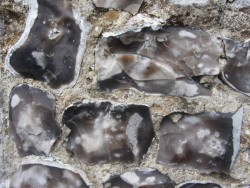
In terms of the buildings in the National Park it is the churches that hold some of the most interesting and important histories. From the types of materials used, to the communities that used them, the churches in the National Park are an incredibly important part of the built landscape.
Many of the villages of the National Park have parish churches that were built soon after the Norman conquest (1066). These churches were not just for prayer but were the centre of village life. In some cases the church is all that is left of a village, where people have moved or farming practices changed. Churches are a particularly significant part of the National Park’s cultural heritage with 167 parish churches being listed buildings. Some are particularly important because of their wall paintings and so are of national significance.
The period after the 1540s saw many changes in religion within Britain and the growth of nonconformist churches and chapels, in particular after 1660. From 1830, it was again legal to build Roman Catholic churches. There are four Catholic churches that are listed buildings and one former Quaker meeting house – other nonconformist chapels are not currently listed.
With less people attending churches and less community activity being centred on the church, many of the buildings are starting to fall into disrepair. Although communities are often trying to raise the funds to save their local churches, many are struggling to raise enough to keep the buildings in good condition.
Churches and churchyards are also important habitats for some species (eg bats) and are also potential sites for learning about places, people, wildlife and geology. Bell towers and large enclosed areas are ideal for many types of bird and mammal to use as their home.
Resources Toolbox
General Interest
All Ages
EYFS
Ages 1–5
Pre School
Key Stage 1
Ages 5–7
Years 1 and 2
-

Beating the bounds
An Activity to help pupils to identify features of personal and whole school importance around their grounds and describe why they are important. -

Building homes for minibeasts
An activity sheet and ideas for studying minibeasts in the school grounds or churchyard. -

Creating a natural gargoyle
An activity to create gargoyles with clay. -

Faith and contemplation
An activity sheet to inspire teacher to enable pupils to make time for contemplation outdoors. -

Shape hunt
An activity for students to look at shapes in their school grounds and other outdoor spaces. -

Signs and symbols
An Activity looking at signs and symbols in the school grounds and community. -

Special Places
An activity to support children in looking at special places in their school grounds and local community.
Key Stage 2
Ages 7–11
Years 3, 4, 5 and 6
-

Beating the bounds
An Activity to help pupils to identify features of personal and whole school importance around their grounds and describe why they are important. -

Building homes for minibeasts
An activity sheet and ideas for studying minibeasts in the school grounds or churchyard. -

Creating a natural gargoyle
An activity to create gargoyles with clay. -

Faith and contemplation
An activity sheet to inspire teacher to enable pupils to make time for contemplation outdoors. -

Shape hunt
An activity for students to look at shapes in their school grounds and other outdoor spaces. -

Signs and symbols
An Activity looking at signs and symbols in the school grounds and community. -

Special Places
An activity to support children in looking at special places in their school grounds and local community.













